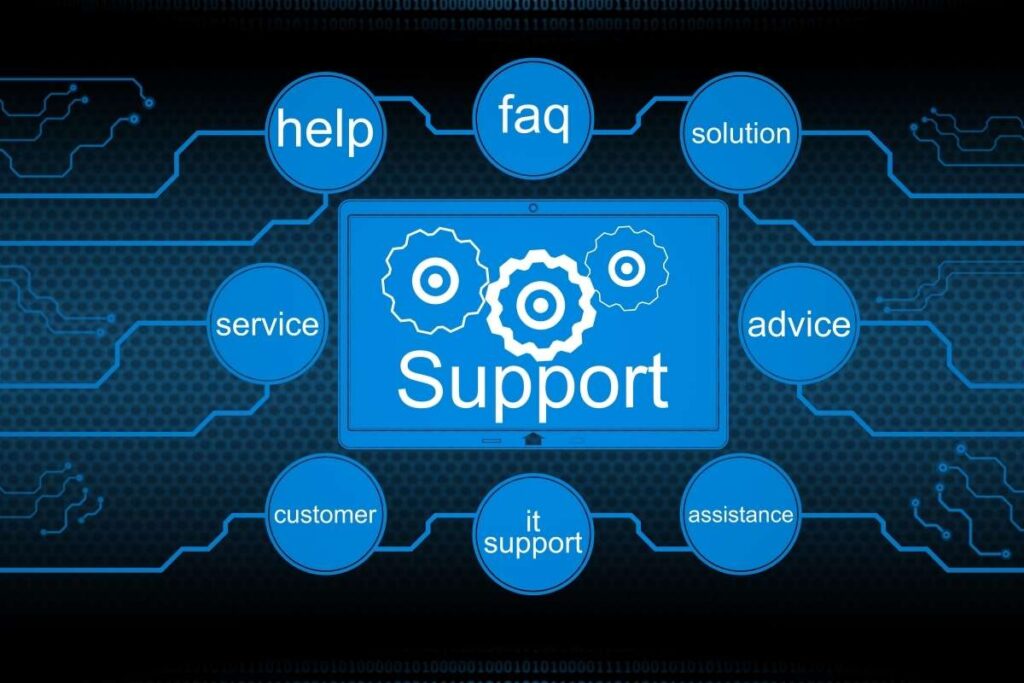Have you ever dreamed of running an empire with a team of people working under your guidance? That will make you feel like a king, where everything is happening under your supervision. Well, this dream can become your reality. But what is stopping you? Possibly it’s unpolished skills, lack of sufficient knowledge, and fear of taking risks, that are keeping you away from taking the first step towards your bright future.
That’s where the Entrepreneurship Development Program (EDP) comes in, a thoughtful initiative designed for every individual who has enough potential but is clueless about how to unlock those precious skills. EDPs will provide the clarity, confidence, and capability needed on your entrepreneurial journey. This program will help you overcome your fear and pump up your confidence to start believing in your dreams of becoming an entrepreneur.
What is an Entrepreneurship Development Program?
Entrepreneurship Development Program (EDP) helps people learn how to start and grow their businesses. It teaches important skills like how to make a business plan, manage money, promote products, handle risks, and become a good leader. These programs are usually run by the government, colleges, or business groups. Their goal is to support people who have business ideas and want to turn them into real companies.
Objectives of an Entrepreneurship Development Program

1. Foster Entrepreneurial Mindset –
Cultivating creativity, innovation, and risk-taking behavior.
2. Skill Enhancement –
Teaching practical business skills such as budgeting, marketing, and legal compliance.
3. Idea to Execution –
Guiding participants from concept development to business launch.
4. Support Ecosystem –
Providing access to mentors, investors, and incubation centers.
Key Components of an EDP
The major components of an Entrepreneurship Development Program (EDP) are specially designed to assist aspiring entrepreneurs with the knowledge, skills, and mindset needed to launch and grow successful ventures. Below are the key components in detail-
1. Entrepreneurial Motivation Training
Objective- To build confidence and ignite the entrepreneurial spirit.
Techniques used:
- Self-assessment exercises
- Success stories of entrepreneurs
- Motivation and risk-taking exercises
Outcome- Enhances confidence, initiative, and goal-setting abilities.
2. Business Opportunity Guidance

Objective: To help participants identify viable business opportunities.
Techniques used:
- Market analysis techniques
- Idea generation and feasibility studies
- Local resource mapping
Outcome- Enables selection of suitable, need-based, and scalable business ideas.
3. Entrepreneurial and Managerial Skill Development
Objective: To build functional and strategic business capabilities.
Techniques used:
- Leadership and decision-making
- Time and team management
- Business communication and negotiation
Outcome- Equips entrepreneurs with the skills to manage people and operations effectively.
4. Business Plan Preparation
Objective: To provide hands-on training in structuring and planning a business.
Techniques used:
- Business model design
- Financial forecasting
- Operational and marketing plans
Outcome- Participants leave with a detailed, investor-ready business plan.
5. Financial and Legal Literacy
Objective: To educate participants about the financial and legal frameworks of running a business.
Techniques used:
- Accounting and bookkeeping basics
- Funding sources (loans, angel investors, grants)
- Regulatory compliance, licensing, and taxation
Outcome- Increases awareness and preparedness for financial and legal challenges.
6. Technical Skills Training (if needed)
Objective: To provide sector-specific training in chosen business areas.
Techniques used:
- Product design and prototyping
- Machinery handling
- Quality control measures
Outcome- Builds technical proficiency for product or service development.
7. Market Linkage and Support Systems
Objective: To connect entrepreneurs with support networks and the market ecosystem.
Techniques used:
- Vendor and buyer networking
- Digital marketing and branding sessions
- Access to incubation and mentorship networks
Outcome- Facilitates smoother market entry and business scaling.
8. Follow-up and Support Services
Objective: To provide ongoing guidance post-training.

Techniques used:
- Mentorship programs
- Progress tracking and feedback
- Help with troubleshooting business challenges.
Outcome- Ensures continuity, growth, and problem-solving support for startups.
Types of Entrepreneurship Development Program
Here are the main types of Entrepreneurship Development Program (EDP), categorized based on purpose, features, and focus groups-
1. Awareness Program
Purpose- To spark interest in entrepreneurship and introduce basic concepts.
Key Features- Seminars, guest lectures, and workshops on motivation and idea generation.
Focus Groups- Students, job seekers, and early professionals.
Examples- Global Entrepreneurship Week (GEW), Kauffman FastTrac workshops, SBA’s Ascent Program.
2. Incubation Program
Purpose- To help transform raw ideas into viable business models.
Key Features- Access to shared office space, mentorship, early-stage funding, and networking.
Focus Groups- First-time entrepreneurs and innovators with untested ideas.
Examples- Harvard Innovation Labs, UC Berkeley SkyDeck, 1871 Chicago, MassChallenge.
3. Accelerator Program
Purpose- To scale and prepare startups for investment and market expansion.
Key Features- 3–6 month intensive programs, business coaching, and “Demo Day” investor pitches.
Focus Groups- Growth-stage startups.
Examples- Y Combinator, Techstars.
4. Skill Development Program
Purpose- To equip entrepreneurs with hands-on, business-critical skills.
Key Features- Practical training in marketing, finance, legal matters, and leadership.
Focus Groups- Existing business owners, managers, and aspiring entrepreneurs.
5. Women-Focused Program
Purpose- To support and empower women entrepreneurs.
Key Features- Tailored mentoring, funding access, peer networks, and leadership training.
Focus Groups- Women founders and small business owners.
Examples- SBA’s Women’s Business Centers, WE NYC.
6. Sector-Specific Program
Purpose- To provide deep expertise in niche industries like AgriTech, HealthTech, or FinTech.
Key Features- Market access support, regulatory guidance, and specialized funding.
Focus Groups- Entrepreneurs in highly regulated or technical sectors.
Examples- Programs in partnership with industry leaders.
7. Government-Sponsored Program
Purpose- To promote entrepreneurship for economic development.
Key Features- Free training, legal support, mentorship, and financial assistance.
Focus Groups- All U.S. citizens, with special outreach to underrepresented communities.
Examples- SBA, SBDCs, SCORE, EDA.
8. Social Entrepreneurship Program
Purpose- To help launch ventures that solve social or environmental challenges.
Key Features- Training in impact models, storytelling, nonprofit fundraising, and scale strategies.
Focus Groups- Social Impact Entrepreneurs.
Examples- Echoing Green Fellowship.
9. Youth & Student Program
Purpose- To introduce entrepreneurship to high school and college students.
Key Features- Bootcamps, hackathons, business plan competitions, and mentorship.
Focus Groups- Teenagers, young adults, and students.
Examples- Junior Achievement, NFTE (Network for Teaching Entrepreneurship).
What is The Role of Government and Academia in Entrepreneurship Development Programs (EDP)?
Government’s Role in Entrepreneurship Development Program (U.S.)
| Area of Contribution | Details | Examples |
| Funding & Grants | Offers financial support to small businesses and startups | SBA microloans, EDA Build to Scale, Minority Business Development Agency grants |
| Mentorship & Counseling | Provides expert guidance for aspiring entrepreneurs | SCORE mentoring, SBDCs (Small Business Development Centers) |
| Training & Skill Development | Delivers workshops and business training | SBA learning platform, Veteran training programs |
| Policy Support & Regulation | Creates favorable policies and incentives for entrepreneurship | Tax reliefs, startup-friendly regulations, and business registration support |
| Inclusive Access Programs | Promotes entrepreneurship among underrepresented groups | SBA Women’s Business Centers, 8(a) Business Development Program |
Academia’s Role in EDP
| Area of Contribution | Details | Examples |
| Entrepreneurship Education | Offers formal programs in business and innovation | Babson College, Stanford d.school, NYU Stern |
| Startup Incubators | Supports early-stage student ventures with space, mentoring, and tools | Harvard Innovation Labs, UC Berkeley SkyDeck |
| Business Competitions & Funding | Hosts pitch competitions and seed funding challenges | Rice Business Plan Competition, MIT $100K |
| Research & Innovation | Translates academic research into commercial ventures | Technology Transfer Offices, university-based IP commercialization units |
| Networking & Mentorship | Connects students with alumni entrepreneurs, industry leaders | University venture networks, guest speaker series |
Success Stories of EDP
The impact of a well-designed Entrepreneurship Development Program is best reflected in the real-world success of its alumni.
1. Spanx – Sara Blakely
Program Support- SCORE Mentoring (SBA)
Sara Blakely started Spanx with $5,000 in savings and turned it into a billion-dollar shapewear empire. Early in her journey, she received mentorship through SCORE, a national EDP offering free advice to entrepreneurs.
Impact- Gained guidance on product development, legal structure, and scaling.
Takeaway- Government-funded mentorship programs can provide real-world advice without the price tag.
2. GoldieBlox – Debbie Sterling
Program Support- Stanford University’s d.school
Debbie Sterling developed GoldieBlox, a toy company focused on STEM education for girls, after studying engineering and product design at Stanford. Her exposure to design thinking and entrepreneurship labs helped shape her business approach.
Impact- From an idea in a classroom to nationwide retail presence (Target, Walmart, Amazon).
Takeaway- University programs can foster mission-driven innovation, especially in underrepresented fields.
3. Rumi Spice – Kimberly Jung, Emily Miller, and Keith Alaniz

Program Support- Harvard Innovation Labs, Veterans EDP
This veteran-founded startup sources saffron from Afghan farmers and sells it to U.S. consumers. The founders were MBA students at Harvard Business School, where they participated in Harvard Innovation Labs.
Impact- Raised funds, appeared on Shark Tank, and built an ethical global supply chain.
Takeaway- Academic innovation centers and veteran-focused EDP are launching platforms for social entrepreneurship.
4. Undercover Colors – NC State University Students
Program Support- NC State Entrepreneurship Garage & NSF I-Corps
A team of students developed nail polish that changes color in the presence of common date rape drugs. Their project gained momentum after support from university incubators and NSF I-Corps, which helps scientists become entrepreneurs.
Impact- Gained national media attention, grants, and investor interest.
Takeaway- Campus labs and federal research-to-market programs can accelerate tech-based startups.
5. Outdoor Afro – Rue Mapp
Program Support- SBA Emerging Leaders Program
Rue Mapp turned a blog about reconnecting Black communities with nature into a nonprofit with nationwide impact. The SBA’s Emerging Leaders EDP provided her with the tools to grow her operations and refine her business model.
Impact- Featured in Oprah Magazine partnered with REI, The North Face, and others.
Takeaway- Nonprofit founders also benefit from structured entrepreneurship programs.
6. Hello Tractor – Jehiel Oliver
Program Support- Echoing Green Fellowship
An agriculture-tech startup that connects farmers in Africa with tractor owners via a mobile app. Though U.S.-based, founder Jehiel Oliver was supported by Echoing Green, a New York-based EDP that funds social entrepreneurs globally.
Impact- Scaled across multiple African countries with U.S. investor support.
Takeaway-Global impact ventures often begin with U.S. startup incubators focused on social entrepreneurship.
7. Thrive Market – Gunnar Lovelace
Program Support- Startup America, accelerator programs
Thrive Market, an online organic grocery platform, launched with the help of startup accelerators and policy support through the Startup America Partnership, a federal initiative to help high-growth entrepreneurs.
Impact- Over 1 million members and $ 100 M+ in annual revenue.
Takeaway- Policy-driven EDPs can provide early momentum for high-impact, tech-enabled companies.
Challenges and How to Overcome Them
Despite their benefits, EDPs face certain challenges:
1. Lack of Access in Underserved Communities
Challenges
Many rural areas, minority communities, and economically disadvantaged regions lack access to quality EDPs, funding, or mentorship.
Solutions
- Expand online training modules and virtual mentorship for remote participants.
- Leverage public-private partnerships to establish satellite EDP centers.
- Provide targeted grants and outreach through government agencies like the SBA, MBDA, and USDA.
Example- Programs like “Rise of the Rest” fund startups in non-coastal cities.
2. Funding Gaps for Early-Stage Entrepreneurs
Challenges
Many new entrepreneurs struggle to secure seed funding, especially in idea or pre-revenue stages.
Solutions
- Encourage EDPs to partner with angel investor networks and community banks.
- Introduce microgrant competitions or seed funding through incubators.
- Educate entrepreneurs on alternative financing options (crowdfunding, CDFIs, bootstrapping).
Example- SBA Microloan Program supports startups with limited credit history.
3. One-Size-Fits-All Program Design
Challenges
Standardized training may not suit diverse industries, backgrounds, or experience levels.
Solutions
- Design modular, customizable curricula tailored to different stages (idea, growth, scale).
- Include sector-specific tracks (e.g., health tech, green startups, creative businesses).
- Incorporate hands-on activities, case studies, and peer learning.
Example- Techstars and MassChallenge offer industry-specific cohorts.
4. Limited Follow-Up and Long-Term Support
Challenges
Many EDPs focus on short-term bootcamps or workshops without follow-up, which hinders sustainable growth.
Solutions
- Develop alumni networks and post-program check-ins.
- Offer mentorship circles, refresher training, and funding navigation support.
- Create peer accountability groups for continuous engagement.
Example- NSF I-Corps provides commercialization support even after the core program ends.
5. Low Participation from Women and Minority Entrepreneurs
Challenges
Systemic barriers and underrepresentation reduce engagement in many programs.
Solutions
- Partner with minority-serving institutions, women’s colleges, and grassroots networks.
- Highlight diverse role models and success stories during outreach.
- Offer childcare stipends, flexible scheduling, and culturally responsive content.
Example- SBA’s Women’s Business Centers provide tailored training and funding support.
6. Gap Between Academic Knowledge and Real-World Execution
Challenges
Some university-based EDPs overemphasize theory and underdeliver on market exposure.
Solutions
- Integrate real-world projects, startup internships, and industry mentors.
- Organize demo days and pitch sessions with local investors.
- Collaborate with chambers of commerce, accelerators, and economic development agencies.
Example- Programs like the Babson College Accelerator combine academia with real market testing.
7. Overcrowding and Competition for Limited Spots

Challenges
High-quality EDPs often face more applicants than they can accept, leaving many out.
Solutions
- Offer tiered levels of access (e.g., open-access online, selective in-person, mentorship-based).
- Scale proven programs through franchise or licensing models.
- Record and share sessions to build a library of learning resources.
Example- SCORE offers open-access webinars and templates, beyond in-person mentoring.
How to Choose the Right EDP
With multiple programs available, selecting the right Entrepreneurship Development Program depends on your goals, background, and industry of interest.
Consider the following-
1. Program Objective-
Is it for idea development, skill training, or business scaling?
2. Duration and Format-
Short-term bootcamp or long-term diploma? Online or offline?
3. Mentorship Access-
Does it offer expert guidance and networking?
5. Success Rate-
What are the outcomes or success stories from previous batches?
6. Affiliation and Recognition-
Is it certified or supported by credible institutions?
Conclusion
Every successful entrepreneur has a story that is filled with doubts, dreams, risks, and unbroken determination. Entrepreneurship Development Program doesn’t just teach you how to start a business, but also connects you with your own potential. You are a student with a big idea, a professional looking for a fresh start, or someone simply passionate about making a difference, there is an Entrepreneurship Development Program out there. You don’t have to walk the path alone. With the right guidance, resources, and community, your dream venture can become your real-life success story. All it takes is one bold step and the right program to guide you forward.
FAQ’s
1. Are these programs available online?
Yes, many institutions now offer online EDPs that include self-paced modules, virtual mentorship, and interactive sessions.
2. What is the cost of attending an EDP?
Costs may vary. Some programs are free or government-subsidized, which runs by public institutions, but those run by private organizations may charge a fee.
3. Do EDPs help with funding or startup capital?
Some programs offer funding support, pitch opportunities, or connect participants with investors and incubators. However, the direct funding is not always guaranteed.










